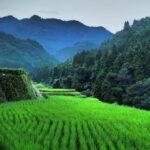 Setouchi Cominca Stays, a unique collection of traditional Japanese cominca homes that have been transformed into exclusive-use, modern vacation rentals, is also a regenerative travel initiative, focused on preserving the local culture of the remote, lesser-known towns of Uchiko in Ehime Prefecture and Shobara in Hiroshima Prefecture.
Setouchi Cominca Stays, a unique collection of traditional Japanese cominca homes that have been transformed into exclusive-use, modern vacation rentals, is also a regenerative travel initiative, focused on preserving the local culture of the remote, lesser-known towns of Uchiko in Ehime Prefecture and Shobara in Hiroshima Prefecture.

The remote hamlet of Shobara in Hiroshima Prefecture, meanwhile, offers a glimpse of ancient Japanese rural life, including the opportunity to stay in one of three historic farmhouses, which date back 100 to 250 years and have been meticulously restored as part of the Setouchi Cominca Stays project. Here, in this remote valley surrounded by picturesque terraced fields where rice has been cultivated for centuries, guests can immerse themselves in a different era of Japan – staying in traditional thatched-roof homes with earthen floor entrances and tatami rooms, soaking in wood-burning outdoor baths, and relaxing in the indoor/outdoor living space known as a doma, around a fire pit. Area excursions available to guests include picking fresh vegetables with locals, cycling through rice fields, experiencing a private Taiko (traditional Japanese drum) or kagura (“dance for the gods”) performance, trekking to local shrines and forest bathing.














